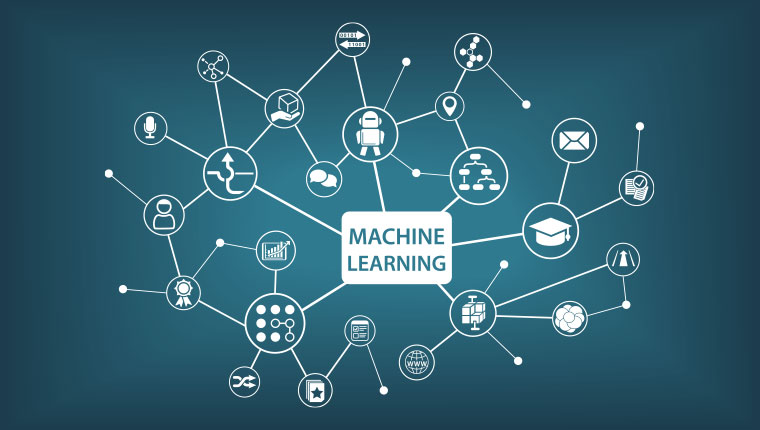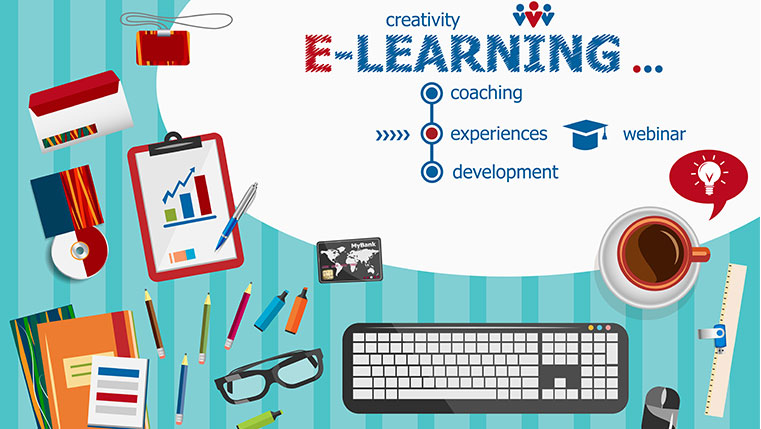5 Benefits of Applying Machine Learning in eLearning

Machine Learning (ML) is a popular buzzword in the field of technology and recently it has entered the eLearning space as well. Machine learning enables computers or machines to make decisions that are data-driven, eliminating the need for explicit programming to execute a task. Machine learning makes use of algorithms that are designed to improve over time depending on the new data they’ll be tracking.
5 Advantages of Incorporating Machine Learning in eLearning
- Reskill employees using personalized learning paths
- Target eLearning delivery through learner profiling
- Provide virtual instruction through chatbots
- Improve eLearning efficiency by predicting learner engagement
- Improve the quality of eLearning courses
What if I tell you that you’ve already experienced the benefits of ML without realizing that it’s machine learning at work? For instance, if you have tried online food delivery platforms such as UberEATS, have you wondered how the app is able to predict an estimated time of delivery or display a list of popular restaurants near you? That’s the power of machine learning.
Michelangelo is Uber’s machine learning platform that predicts the time that would be required for meal preparation and delivery. This is done even before an order is received and also at each stage of the food delivery process. Another example is playlists created by Spotify using machine learning algorithms based on the music you’ve listened to in the past.
Is Machine Learning the Same as Artificial Intelligence?
Not really! Artificial intelligence is a broad concept that enables computers to think just like how humans would do using their natural intelligence. On the other hand, machine learning is an application or subset of Artificial Intelligence where computers are given access to data and are allowed to learn or interpret data on their own, using of a set of statistical tools.
Application of Machine Learning in E-learning
Just like in other fields, machine learning is being applied in online training as well. Here are 5 benefits of using machine learning in eLearning.
1. Delivers Personalized Learning Paths to Reskill Employees
Continuous learning at the workplace is essential for the success of a business, more so because the half-life of skills is on the decline. For instance, what you learned 10 years ago is obsolete and less than half of what you learned 5 years ago is relevant today. So, there’s a need to continuously reskill employees to equip them for the current demands of the industry.
But how can you predict what your employees already know and what they don’t? Each one may be at different learning levels and may prefer different learning styles. An adaptive learning program that leverages machine learning algorithms can prove to be useful. In this kind of online training, learners are required to answer a structured set of questions. Based on their answers, content they are already familiar with is removed from the course and they are presented with content that they need to know. So each learner is taken on a personalized learning path to help them meet their current training demands.
2. Provides Learner Profiling for Targeted Delivery of E-learning
Profiling is done by applying machine learning algorithms on data. To give you a simple example, you might have noticed recommendations for products when you shop, or advertisements when you browse the web. This is based on the data gathered from your previous shopping experiences or search history.
In exactly the same way, learner profiling is done based on their previous learning history, and the data gathered about the learner. It could be learners’ roles in the organization, job responsibilities, areas of interest, career growth plans, and so on. Learners or groups of learners are classified under a certain profile based on the interests they share.
Machine learning algorithms form a pattern based on the information that’s gathered and use it to deliver eLearning that’s targeted. This does help build a learning culture within the organization. After all, you would love to learn when you’re presented with content that’s of interest to you, wouldn’t you?
3. Leverages Chatbots as Virtual Instructors
Chatbots refer to software that’s built using machine learning and artificial intelligence to interact with humans. Chatbots could be used as virtual instructors in an eLearning course. They could be used to answer questions that learners might have. They take the place of an instructor and provide a guided learning experience.
Chatbots in eLearning can be compared to Amazon’s Alexa or Apple’s Siri, but they are not restricted to answering queries. They are also capable of assigning projects to learners, checking project work, and can keep track of a learner’s progress in the course. They can provide meaningful feedback and motivate learners to complete eLearning courses.
Machine learning and AI powered chatbots can be used to provide an interactive learning experience in eLearning courses. Chatbots can work on multiple platforms, right from websites to mobile phones. It’s literally like having an instructor to assist you at the tap of a button.
4. Predicts Learner Engagement to Improve eLearning Efficiency
How efficient is the eLearning course you’ve just rolled out? Do learners find it engaging? Often, we assume it’s engaging or base our assumption on the feedback we’ve got. But you do not know if learners struggled at some point during the course, or if some of them felt the course wasn’t engaging enough. The feedback you gather might indicate otherwise because it takes into account the opinion of the majority.
Using machine learning in eLearning enables you to track how learners interact with the content presented onscreen. Here are some questions for which machine learning can provide answers:
- Did learners take a longer time to understand content on a particular slide?
- Did they take a longer time to answer questions in the formative assessment?
- Did they quickly skim through certain slides because they were familiar with the content?
When such information is tracked, an LMS that has machine learning capabilities can automatically direct learners to content that would help them gain more information on the subject. In case learners are already familiar with the content, it can present content that facilitates deep learning. By doing so, learner engagement increases and the eLearning course becomes much more efficient than it would normally be.
5. Improves E-learning Assessment Quality and Increases Retention
Assessments in eLearning are usually in the form of multiple choice questions (MCQs). This is because it’s easier to grade MCQs. But with the introduction of machine learning in eLearning, questions can be presented in multiple formats. It can be an essay or a long answer instead of an MCQ where there’s a scope for learners to score by guessing. Of course, this requires a complex machine learning algorithm to be used.
A software tool such as Intelligent Essay Assessor (IEA) can evaluate the depth of the essay, the fluency of language, the correlation between the topic and the content in the essay, and so on. It was noticed that the score generated by IEA and the score given by experts on the topic were almost similar. Also, the feedback given by the IEA and human instructors were not conflicting (V. V. Ramalingam et al 2018 J. Phys.: Conf. Ser. 1000 012030, Retrieved from https://iopscience.iop.org/).
Machine learning can also be used to reinforce content covered in an eLearning course. A simple quiz to check the learners’ understanding at regular intervals increases content retention.
The application of machine learning in eLearning is still evolving. Currently there are some drawbacks to machine learning, and it might take some time before its capabilities are fully explored. For instance, predictions need not be right always. If a learner has not done well in a previous eLearning assessment, that doesn’t mean he/she will perform poorly in the current course. The content of the course does have an impact on the learning receptivity. Also, the cost associated with machine learning is high.
While there’s no doubt that machine learning can enhance eLearning, is it actually required? In my opinion, for eLearning or for that matter, any form of training to be effective it’s more important to focus on good instructional design by leveraging adult learning principles and including engaging interactivities, thus making the time spent on training worthwhile for your employees. If you’ve explored machine learning in your eLearning courses, please do share your thoughts through the Comments section.





![Empowering Your Wallet: Embrace eLearning for Financial Education[Infographic]](https://blog.commlabindia.com/hubfs/blogs/Empowering-Your-Wallet-Embrace-eLearning-for-Financial-Education%5BInfographic.jpg)